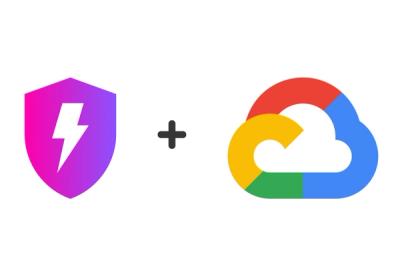
Security News
Next.js Patches Critical Middleware Vulnerability (CVE-2025-29927)
Next.js has patched a critical vulnerability (CVE-2025-29927) that allowed attackers to bypass middleware-based authorization checks in self-hosted apps.
serverpilot
Advanced tools
This is a simple Node.JS wrapper to communicate with the ServerPilot API.
Check out the official ServerPilot API documentation for more information on using the ServerPilot API.
To start making calls to ServerPilot from Node.JS, install it with NPM:
$ npm install serverpilot --save
Log into your ServerPilot account, navigate to the Account section, and click API. Generate an API Key.
Create the ServerPilot client as follows:
var ServerPilot = require('../lib/serverpilot');
var sp = new ServerPilot({
clientId: <YOUR CLIENT ID>,
apiKey: <YOUR API KEY>
});
Servers are Ubuntu 12.04 or 14.04 machines that are managed by ServerPilot.
Every App, Database, and System User is related to a Server. By default, all
Servers will have a serverpilot System User.
Learn more about what is involved in creating a server.
// List servers
sp.getServers( function(err, data) {
if ( err ) { console.log( err.message ); }
// This is where you would do something with the data
console.log(data.data);
});
// Get a single server
var serverId = '123456';
sp.getServers(serverId, function(err, data) {});
// Create a server
var serverName = 'newserver';
sp.createServer(serverName, function(err, data){});
// Update a server
sp.updateServer({
serverId: serverId,
firewall: firewall, // Boolean
autoupdates: autoupdates // Boolean
},function(err, data) {});
// Delete a server
sp.deleteServer(serverId, function(err, data) {} );
System Users are Linux user accounts that ServerPilot creates on your Server. Every App belongs to and runs as one of these System Users. You can log in to your Server as a System User via SSH to deploy an App or view an App's log files.
By default, ServerPilot creates the serverpilot System User.
The home directory of each System User created by ServerPilot is
/srv/users/USERNAME
Under the System User's home directory are additional directories:
apps — each app has its own directory under here.log — each app has its log files here.You must be a paid user to add/edit system users. An error will be thrown if you are on the free plan.
// List system users
sp.getSysUsers(function(err, data) {});
// Get a single system user
var sysUserId = 'test123'
sp.getSysUser(sysUserId, function(err, data) {} );
// Create a system user
sp.createSysUser({
serverid: serverId,
name: name,
password: password
}, function(err, data) {} );
// Update a system user's password
sp.updateSysUser({
sysUserId: sysUserId,
password: 'test45678' // Must be at least 8 characters
}, function(err, data) {});
// Delete a system user
sp.deleteSysUser(sysUserId, function(err, data) {});
Apps are your web applications. Sometimes people call apps "websites".
ServerPilot currently supports PHP 5.4, 5.5 and 5.6 apps.
ServerPilot configures your servers with Nginx as the public-facing webserver. Nginx serves static files and all other requests are proxied to Apache 2.4 so that you can use .htaccess files. PHP is configured to run via FPM. Each app can have multiple MySQL databases.
The web root directory for each app is:
/srv/users/serverpilot/apps/{APPNAME}/public
ServerPilot does not manage DNS for you. In order for you to access your apps by their domain name, you must make the appropriate changes in your domain's DNS zone so that your domain name resolves to your server's IP address. You can do this where you currently manage DNS for your domain.
// List apps
sp.getApps(function(err, data) {});
// Get a single app
var appId = 'test123';
sp.getApp(appId, function(err, data) {});
// Create an app
sp.createApp({
name: 'testapp',
sysuserid: 'abc123',
runtime: 'php5.5',
domains: ['testapp.com','www.testapp.com']
}, function(err, data) {});
// Update an app's runtime or domains
sp.updateApp({
appId: appId,
runtime: 'php5.6',
domains: ['mail.google.com','google.com']
}, function(err, data) {});
// Delete an app
sp.deleteApp(appId, function(err, data) {});
// Add SSL to an app
sp.addSSL({
appId: appId,
key: sslKey, // Text version of your key
cert: sslCert, // Text version of your cert
cacerts: null // Any CA Certs. Null is OK.
}, function(err, data) {});
// Delete SSL from an app
sp.deleteSSL(appId, function(err, data) {});
Databases are MySQL databases. Each Database is associated with an App.
There is only one Database User for each Database.
// List databases
sp.getDatabases(function(err, data) {});
// Get a single database
var databaseId = 'test1234';
sp.getDatabase(databaseId, function(err, data) {});
// Create a database
sp.createDatabase({
appid: appId,
name: databaseName,
user: {
name: databaseUserName,
password: databaseUserPass
}
}, function(err, data) {});
// Update a database user's password
sp.updateDatabase({
databaseId: databaseId,
user: {
id: databaseUserId,
password: 'mynewpassword'
}
}, function(err, data) {});
// Delete a database
sp.deleteDatabase(databaseId, function(err, data) {});
Actions are a record of work done on ServerPilot resources. These can be things like the creation of an App, deploying SSL, deleting an old Database, etc.
All methods that modify a resource will have an actionid top-level key in the
JSON response. The actionid can be used to track the status of the Action.
Possible values of Action status
| Status | Description |
|---|---|
success | Action was completed successfully. |
open | Action has not completed yet. |
error | Action has completed but there were errors. |
var actionId = 'test1234';
sp.getActionStatus(actionId, function(err, data) {});
To run tests, ensure you have Mocha installed on your system.
$ npm install -g mocha
Next, set your environmental variables like this:
$ export SP_CLIENT_ID=YOURCLIENTID SP_API_KEY=YOURAPIKEY
Then run all the tests using this handy shortcut:
$ npm test
Or run an individual test like this:
$ mocha test/apps.test.js -t 15000
MIT. See the License file for more info.
FAQs
A Node wrapper to communicate with the ServerPilot API
The npm package serverpilot receives a total of 16 weekly downloads. As such, serverpilot popularity was classified as not popular.
We found that serverpilot demonstrated a not healthy version release cadence and project activity because the last version was released a year ago. It has 1 open source maintainer collaborating on the project.
Did you know?

Socket for GitHub automatically highlights issues in each pull request and monitors the health of all your open source dependencies. Discover the contents of your packages and block harmful activity before you install or update your dependencies.

Security News
Next.js has patched a critical vulnerability (CVE-2025-29927) that allowed attackers to bypass middleware-based authorization checks in self-hosted apps.

Security News
A survey of 500 cybersecurity pros reveals high pay isn't enough—lack of growth and flexibility is driving attrition and risking organizational security.

Product
Socket, the leader in open source security, is now available on Google Cloud Marketplace for simplified procurement and enhanced protection against supply chain attacks.